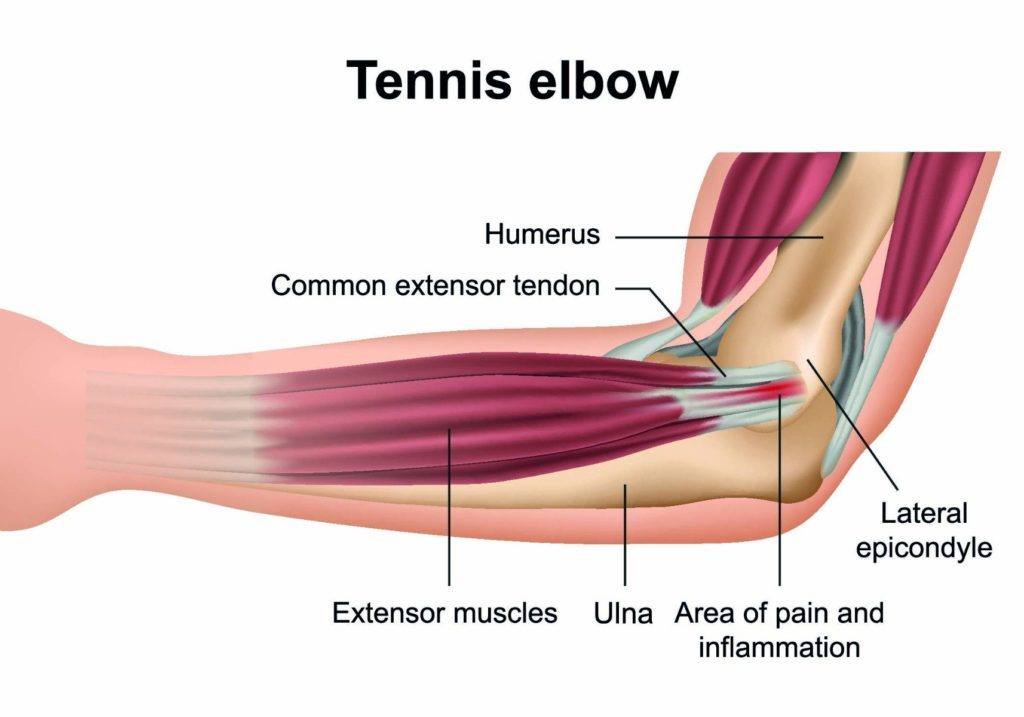What is epicondylitis?
“Tennis elbow (lateral epicondylitis) is a painful condition that occurs when tendons in your elbow are overloaded, usually by repetitive motions of the wrist and arm” (Mayo Clinic, 2019).
What causes epicondylitis?
“Tennis elbow is an overuse and muscle strain injury. The cause is repeated contraction of the forearm muscles that you use to straighten and raise your hand and wrist. The repeated motions and stress to the tissue may result in a series of tiny tears in the tendons that attach the forearm muscles to the bony prominence at the outside of your elbow. As the name suggests, playing tennis — especially repeated use of the backhand stroke with poor technique — is one possible cause of tennis elbow. Despite its name, athletes aren’t the only people who develop tennis elbow. People whose jobs feature the types of motions that can lead to tennis elbow include plumbers, painters, carpenters and butchers” (Mayo Clinic, 2019).

What are the symptoms of epicondylitis?
“The pain associated with tennis elbow may radiate from the outside of your elbow into your forearm and wrist. Pain and weakness may make it difficult to shake hands or grip an object, turn a doorknob [or] hold a coffee cup” (Mayo Clinic, 2019).
How does one treat epicondylitis?
There are many treatment options for those with tennis elbow depending on the severity of the case. For mild cases, over the counter medications such as ibuprofen or tylenol can help decrease pain and inflammation. The use of hot or cold packs may also help to decrease pain and swelling. Some patients may benefit from wearing a compression brace in the affected area. For longer lasting pain relief, patients may turn to chiropractic adjustments paired with electric muscle stimulation or ultrasound therapy. Massage therapy paired with physical therapy, such as stretching and strengthening the arm, may also help to relieve pain and keep the patient out of pain. If these therapies do not heal the patient, they may turn to injections or surgery. “Your doctor might suggest injecting platelet-rich plasma, Botox or some form of irritant (prolotherapy) into the painful tendon. Dry needling — in which a needle pierces the damaged tendon in many places — can also be helpful… If your symptoms haven’t improved after six to 12 months of extensive non-operative treatment, you may be a candidate for surgery to remove damaged tissue. These types of procedures can be performed through a large incision or through several small incisions. Rehabilitation exercises are crucial to recovery” (Mayo Clinic, 2019).
Work Cited
Tennis elbow. (2019, February 14). Retrieved November 16, 2020, from https://www.mayoclinic.org/diseases-conditions/tennis-elbow/diagnosis-treatment/drc-20351991
Tennis elbow. (2019, February 14). Retrieved November 16, 2020, from https://www.mayoclinic.org/diseases-conditions/tennis-elbow/symptoms-causes/syc-20351987
